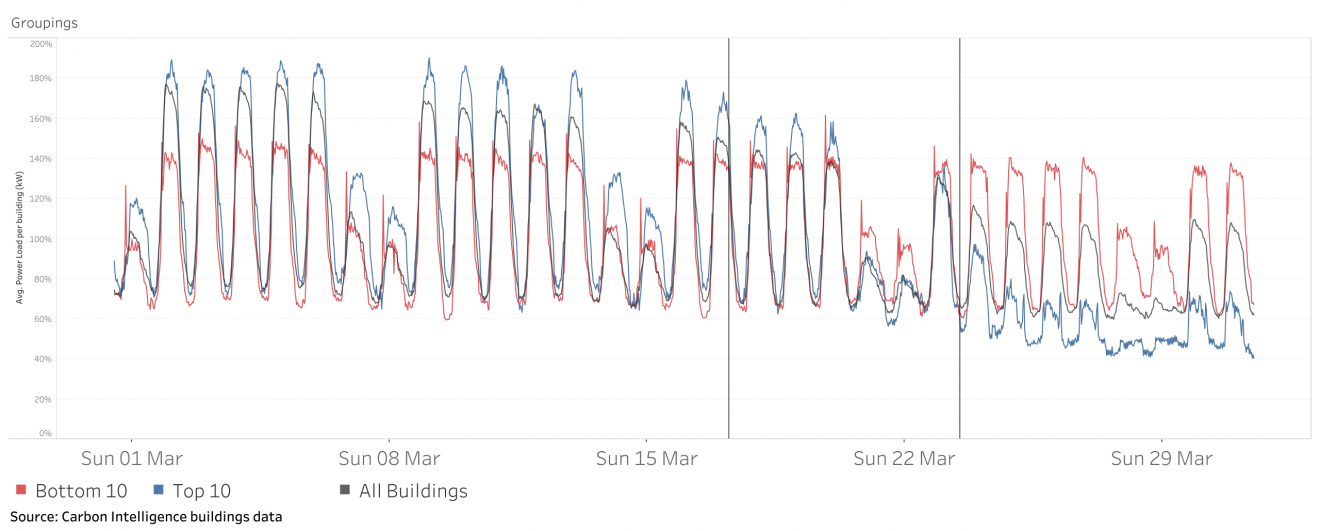April 23, 2020
Carbon emissions from buildings fall, but more to be done
 Despite a fall in carbon emissions from buildings as a result of the lockdown, businesses can do much more to cut carbon and save costs during the COVID-19 lockdown reveals latest data from Carbon Intelligence which tracked and analysed energy usage from 300 buildings during this period.
Despite a fall in carbon emissions from buildings as a result of the lockdown, businesses can do much more to cut carbon and save costs during the COVID-19 lockdown reveals latest data from Carbon Intelligence which tracked and analysed energy usage from 300 buildings during this period.
Covering the commercial office, retail and hotel sectors, the smart building analytics highlight the final week of March when the first lockdown orders were issued – providing a full picture of average energy usage including ventilation, AC, IT equipment and plant rooms.
Using remote monitoring and minute by minute data reporting, sustainability experts, Carbon Intelligence, found only a 16 percent average reduction in building energy use. While the worst 10 percent percent of buildings achieved only a 3 percent reduction in energy usage, despite the government requiring people to work from home, avoid unnecessary travel and socially distance themselves from others.
Meanwhile, the top 10 percent of buildings achieved an impressive 54 percent reduction – saving £4,200 per week of energy savings per large office building and 5,600kg CO2e/week of carbon emissions – the equivalent of four London to New York return flights.
Other key findings include single occupier buildings achieving on average higher emission reductions than multiple occupier buildings as there is a greater likelihood of these buildings remaining partly occupied for critical operations. While buildings with older plants and control systems struggled to cut energy usage at all.
Ventilation and heating were the biggest energy drainers across all buildings, covering over half of energy use on average, with some buildings still operating central plant equipment on a standard time schedule despite no occupants during this period. Buildings with a skeleton staff also fared poorly, with employees often working across multiple floors.
Says Cian Duggan, Founder and Chief Innovation Officer, Carbon Intelligence: “The COVID-19 crisis has put enormous pressure on businesses to reduce costs whilst ensuring health and safety compliance. We’ve seen smart building technologies help facility teams remotely manage assets, improving visibility and control over building performance when it matters most.
“In the longer term this control will also help businesses meet their carbon reduction goals and improve indoor air quality for building occupants, and with at least another three weeks in lockdown organisations still have time to make changes and generate substantial savings.”














